Bicycle forks: device, types, tips for choosing and installing
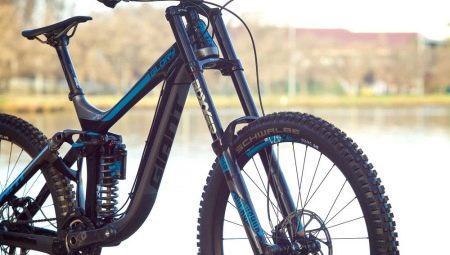
The fork is considered one of the most important components of a bicycle. It is responsible for fixing the wheel axle, adjusting the direction of the vehicle, and preserving the rest of the bicycle components.
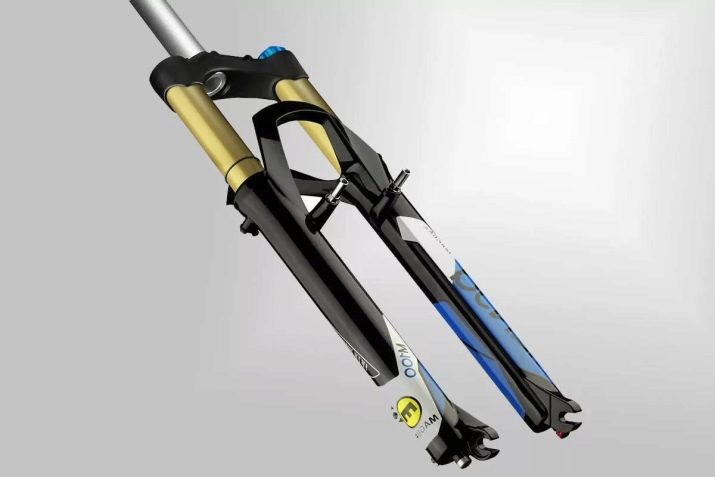
In this article, you will get acquainted with all the useful information about bicycle forks: their device, varieties, as well as recommendations for their selection and installation.
Purpose and device
A bicycle forks are designed to perform almost the same function as a car suspension. It fixes the front wheel of the bicycle, is responsible for maneuverability and steering through the steering wheel, and (depending on the version) can greatly facilitate the movement of the cyclist on bad roads.

Most often, when talking about the functions and advantages of bicycle forks, we are talking about exactly about the damping varieties of these units. This is the most popular type of forks today, widely used both for driving on urban roads and on country roads.
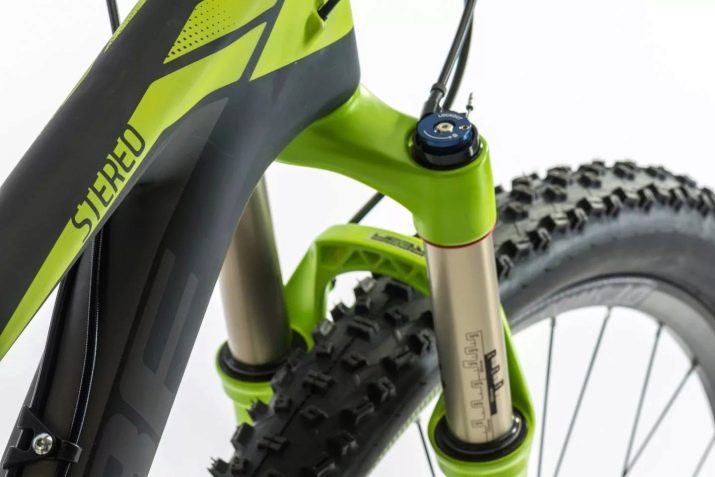
Pros.
- A high-quality bicycle fork with shock absorption reduces the shock and vibration load from the wheel to the frame components of the bicycle and the handlebars. This allows you to keep the bike for a long time with its constant use on problem roads.
- The shock-absorbing fork allows the vehicle to maintain its speed as much as possible on problem areas of the road. The “braking effect” that occurs when a bicycle wheel hits bumps or holes is absorbed by the shock absorbing mechanism.
- The ease of movement on uneven road sections ensures complete control over the bike. In addition, some types of forks allow for more efficient use of the bike when cornering and braking.
- One of the most enjoyable and useful features of a shock absorber front fork is your health and ease of movement. Agree, it is much more pleasant to move on a rough road without constant shaking and bouncing. In addition, reducing the shock pressure on the handlebars of the bicycle allows you to maintain the health of your joints for a longer period, which experience tremendous stress from shaking.
- Overcoming any unevenness on the road slows down the bike, which forces the athlete to use even more strength to move quickly along the track. Consequently, the fork saves a tremendous amount of effort, which can be effectively expended to cover a greater distance.
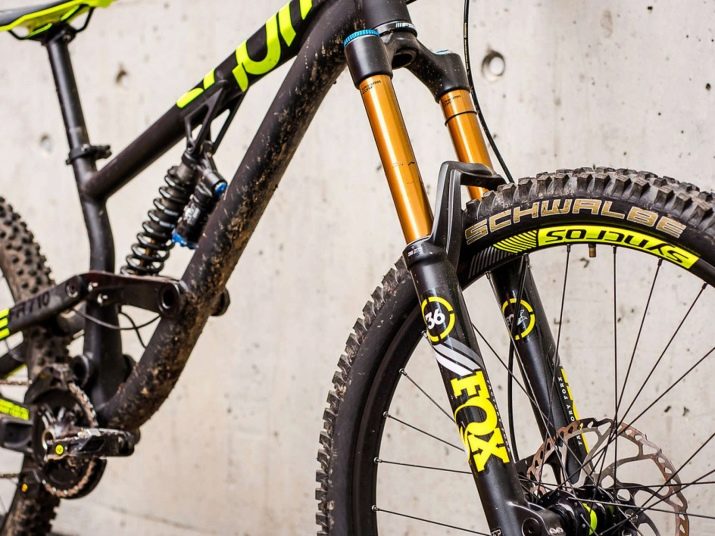
There are only two disadvantages of bicycle forks.
- The more complex the design of a fork and the more functions it performs, the more it will tend to weigh and cost more. Select bike forks can weigh up to 3kg, which is 1/3 the weight of most standard mountain bikes.
- Athletes who use the forks' potential to 100% when performing maneuvers and tricks are forced to use additional energy to swing the bike.

The design of almost any bicycle fork (will be considered using the example of a shock absorber) consists of the following components.
- Steering tube (or, as some call it, the stem) connects the fork itself to the handlebar and frame components. As a rule, it is carried out in standardized sizes. There are straight and tapered varieties.
- Crown or crown - performs the function of connecting the inner pipes and pants, which are responsible for fixing the wheel and axle. A bicycle fork can be either single or double crown. Usually, this component is made from the strongest materials, since it is the crown that takes the main load from the wheel and pipes, especially when it comes to models without shock absorption.
- Leg or inner tube Is a fork component that is directly connected or pressed into the crown and goes into the fork legs (in units with shock absorption). Some experts refer to this component as a piston.
- Settings or adjustments are located on the heads of the "legs". It is through them that the wheel is pumped with air, if we are talking about air models of the forks.
- Cuffs or seals are installed at the junction of the inner pipes entering the pants, thereby preventing dust and dirt from entering the damping mechanism.
- Pants are a kind of outer casing for the entire damping device. Their diameter is larger than the diameter of the piston. At the bottom, the pants end with dropouts, which are responsible for fixing the axis, and at the top - with "gorillas", which, like a crown, are already connected by the pants themselves.
- Gorillas or boosters, are not present in all models of forks, even with shock absorption. They are designed to evenly distribute the load from the pants.
- Dropouts, as already mentioned, they are located at the bottom of the pants, where the axle of the wheel is fixed.
- Damper represents the inner filling of the "leg" or the shock-absorbing mechanism itself.
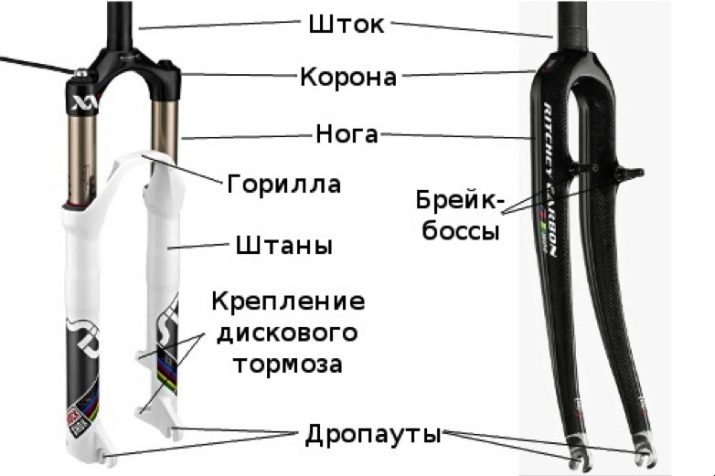
Views
All bicycle forks can be divided into several independent types depending on the design, the type of the fork itself and its shock-absorbing mechanism.
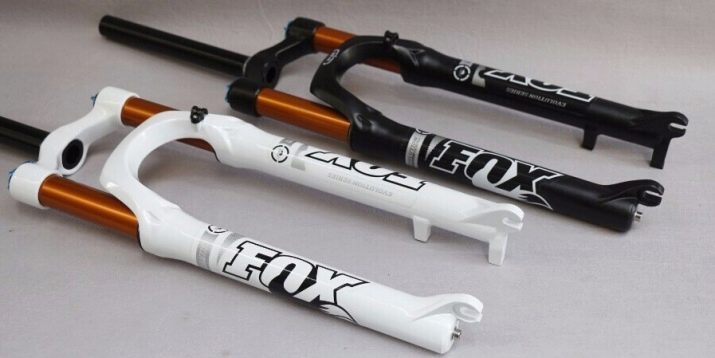
By type of construction, forks are rigid (or fixed), shock-absorbing, double-crowned, one-legged and "flip-flops". Each type is designed for specific roads and specific bike models.
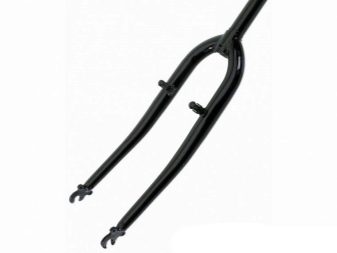
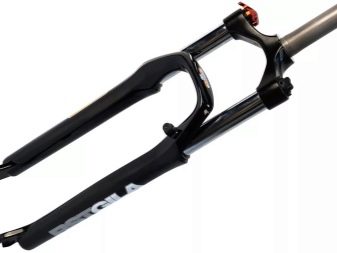

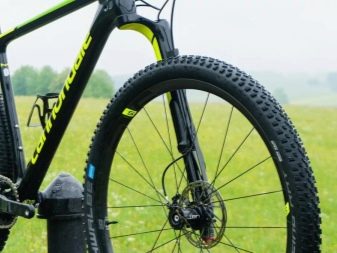
Rigid or fixed
Such models of bicycle forks are considered the simplest and most budgetary.Such units do not have complex shock-absorbing elements, but today they occupy a leading place in the bicycle forks market along with shock-absorbing ones.
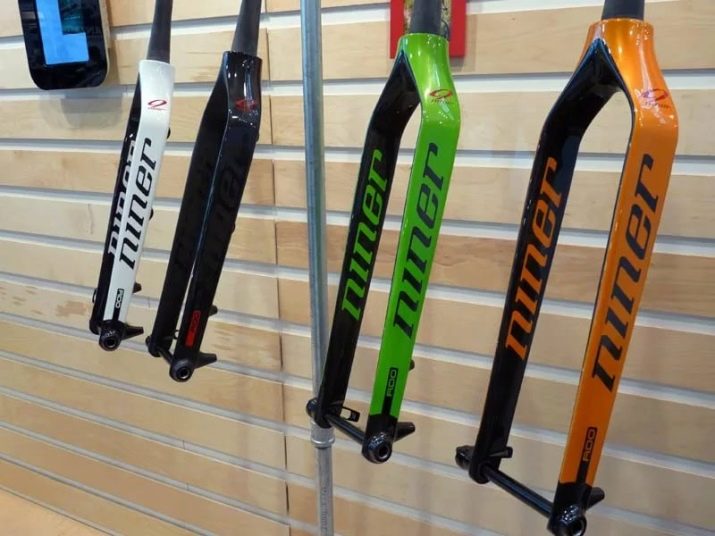
Features of driving on fixed units:
- most often they are installed on road-type bicycles designed for riding exclusively on flat city or professional tracks;
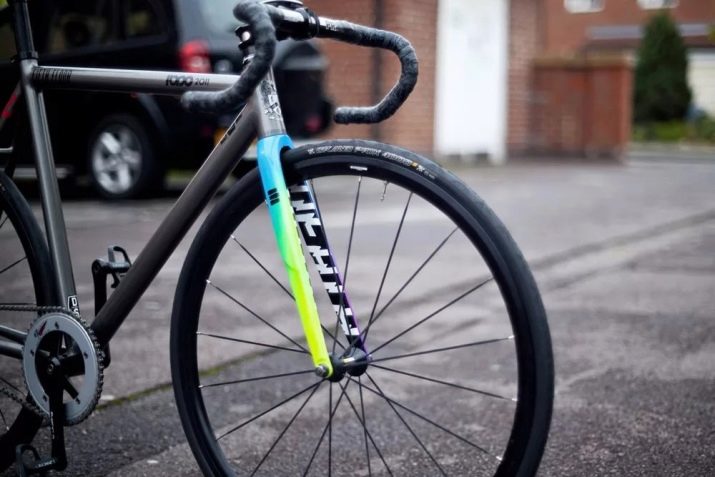
- rigid forks are usually installed in bicycles of a walking or city type, which are not capable of developing high speeds;
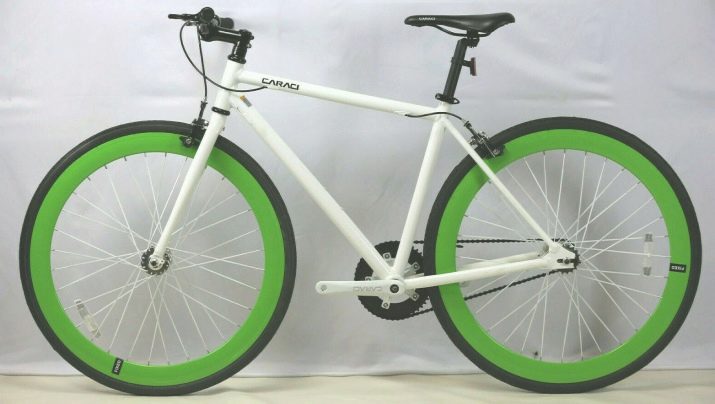
- Rigid models are ideal for children's bicycles due to their simplicity of design and high level of control on smooth roads.
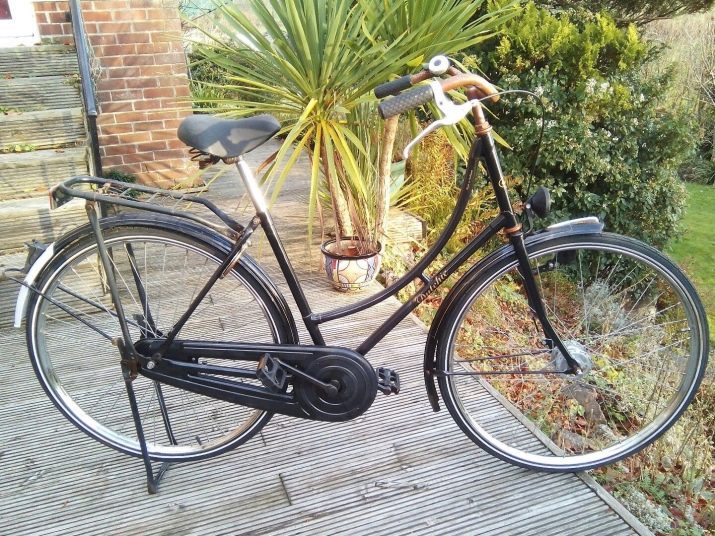
The popularity of rigid fork bikes is due to a number of factors.
- The weight... Due to the absence of complex damping mechanisms and additional mountings, such units are extremely lightweight. Consequently, bicycles with such forks are very lightweight, easy to operate and store.
- Structural strength. Fixed forks are as durable as models with shock absorbers. All thanks to the monolithic structure of such forks, where there are no small components that can potentially break under prolonged and heavy load on the bike.
- Price. Fixed bikes are usually much cheaper than the same cushion bikes. The price difference can range up to $ 100 or more.
- Easy to install... Unlike other types of forks, rigid forks can be installed on absolutely any type of bike. Almost everyone can handle their installation.
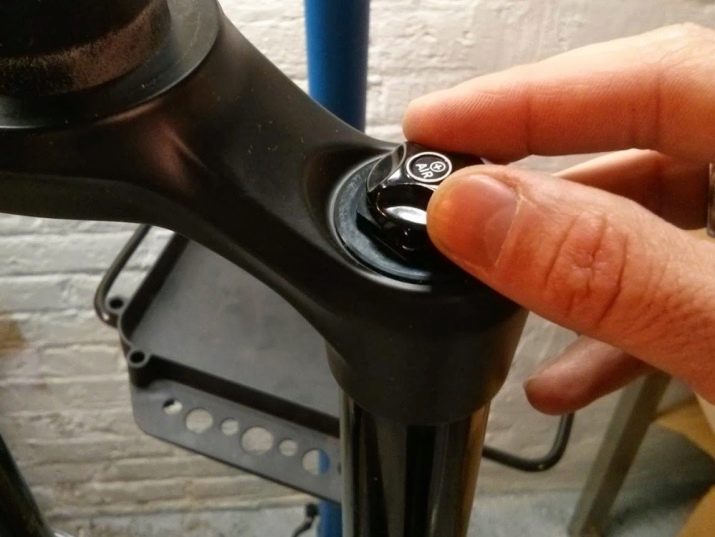
Experts advise buying fixed units only if your goal is not daily off-road walks. These forks are ideal for long journeys on good city roads.

Depreciation
Unlike rigid models of forks, these units have a damping mechanism, in the role of which only 3 elements can act: oil, spring or air. There are models with both single (spring only) and combined (air-oil) damping.
The type of shock absorber itself affects the quality of the unit, as well as its price.
The most popular varieties are namely spring forks - they are simpler than others in design, installation and repair.
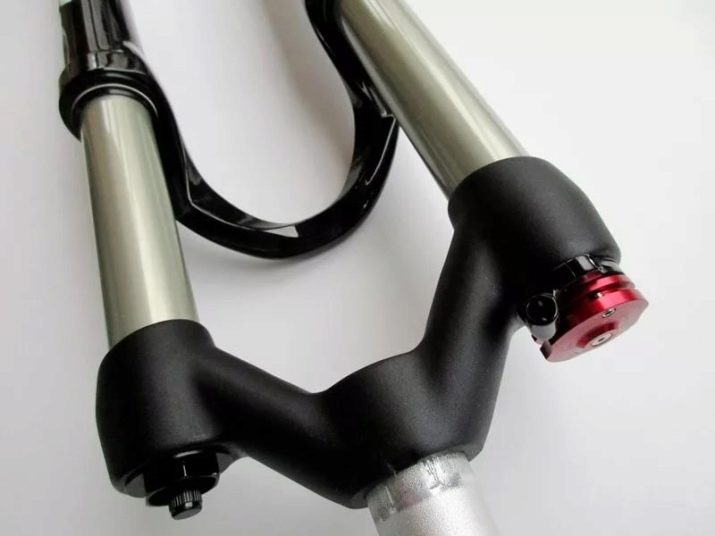
The advantages, disadvantages, as well as the peculiarities of riding on shock-absorbing forks have already been described in detail at the very beginning of the article: such forks allow you to move more efficiently and faster off-road, preserve the condition of the bike for a longer period and protect the health of the athlete himself. If we talk about the cons, then this is, first of all, increased price and increased weight due to the complexity of the depreciation mechanism.
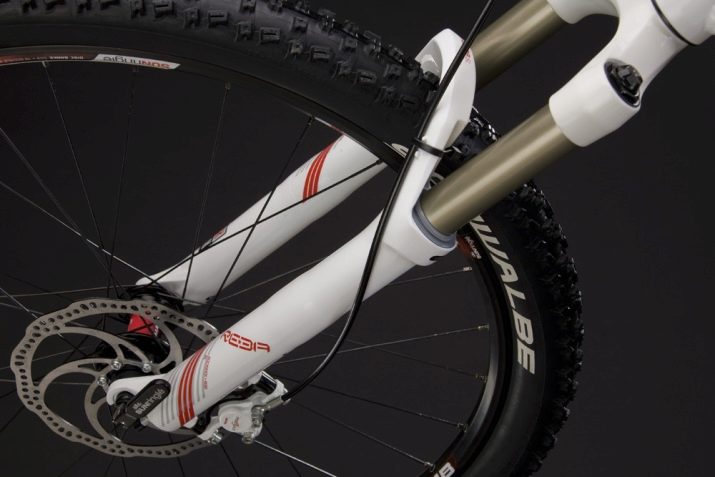
Double-crown
The first models of suspension forks appeared in the second half of the 20th century, but experts only recently came to the conclusion that the main pressure and stress from all elements of the fork is taken by the crown, which connects the inner tubes and distributes the load between them, when using a bicycle. The crown is exposed to especially strong pressure during off-road driving and during corner wheel impacts.
This led to the creation of a unit with a completely new design, which involved the use of two separate crowns at once, holding the "legs".
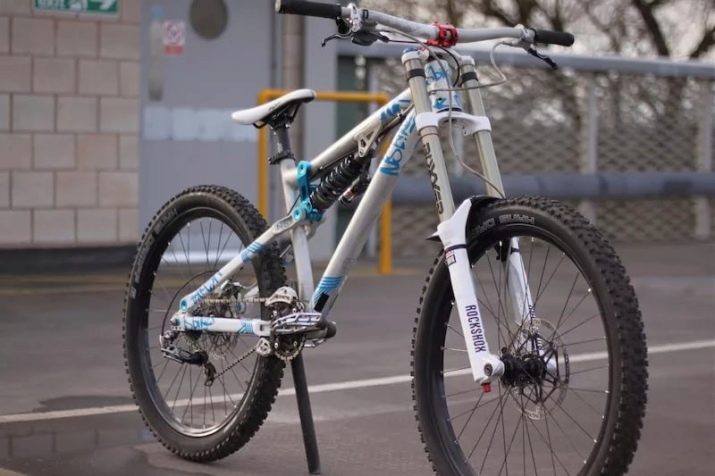
Of the advantages of such models, one can single out phenomenal strength and reliability - bicycle models with this design are considered to be among the most durable. As for the disadvantages, it is, first of all, the increased weight, the elongated structure of the "legs", which makes it possible to use this technology in far from every bicycle, as well as the increased cost.

One-legged
This type is only gaining popularity in the modern bicycle market.Initially, the creation of such bicycles was only a marketing ploy to attract the attention of customers, but over time, these models have become a full-fledged, albeit controversial, variety with its own characteristics, pros and cons.
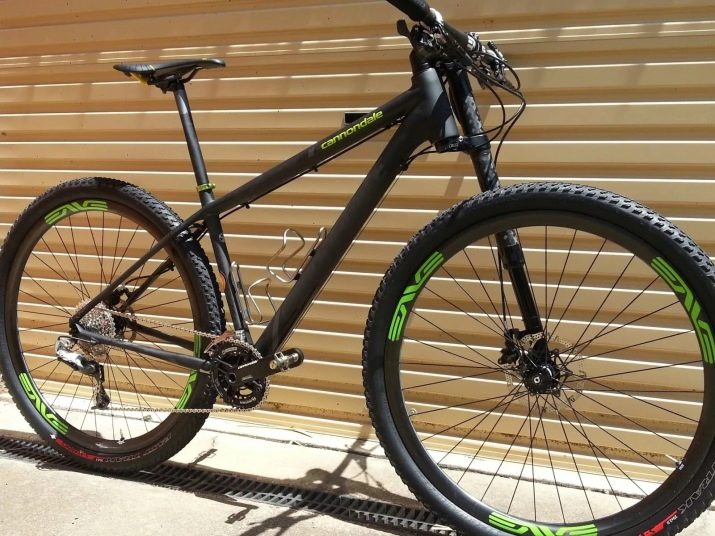
One-legged forks are designs with one single leg that secures the axle of the wheel. Such models may also have cushioning elements that will be designed to relieve pressure on one leg of the bike.
The unambiguous advantage of such bike models is considered to be a lightweight design, which directly affects the total weight of the bike, as well as the relative reliability of such models, which is achieved through the use of heavy-duty materials.
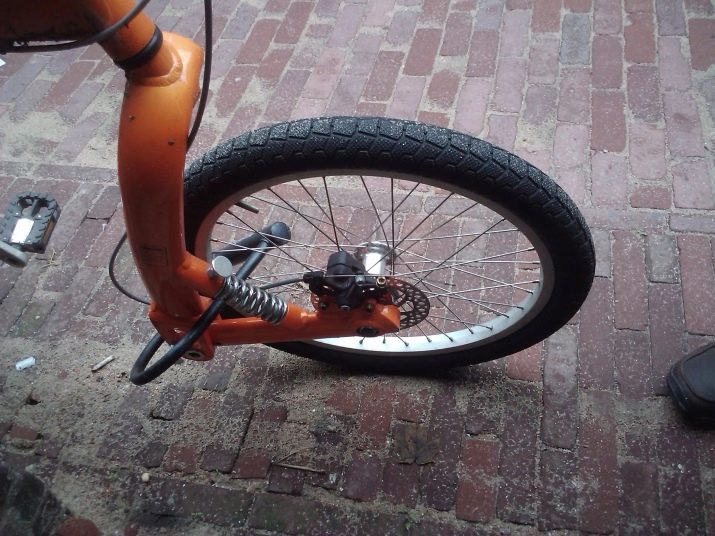
"Changeling"
The design of such units is as follows: legs or inner tubes serve for attaching the dropouts and are located at the bottom, while the pants are located at the top and connected by a crown.
This design provides the bike with maximum front shock absorption and reduces stress on all components.
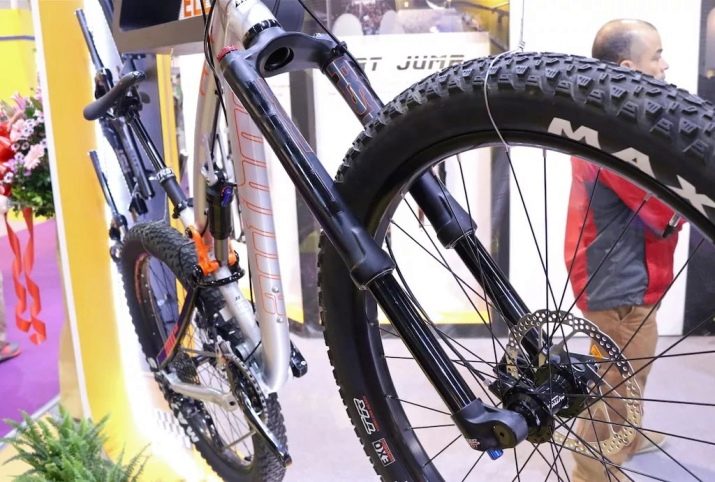
Such forks gained their popularity due to the increased number of adjustments, as well as open access to the shock absorber mechanism.... Despite this, these bicycles require constant maintenance and are much more expensive than standard shock-absorbing models.
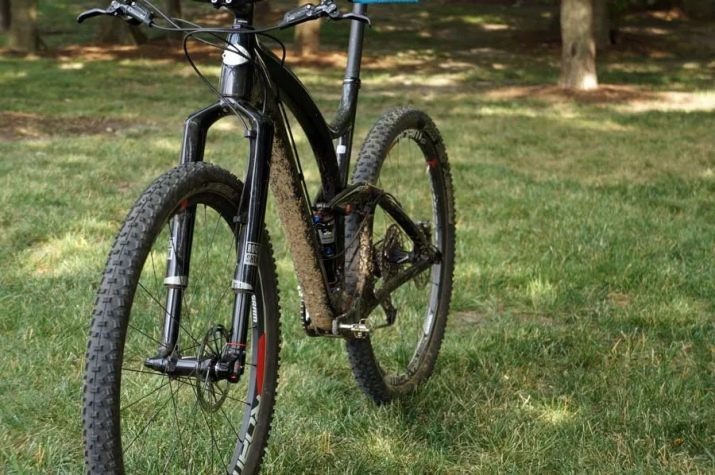
Depending on the type of shock absorbing element, there are spring, oil and air models for the bicycle forks, as well as derivatives from combinations of these types.
- Spring loaded. The design of such forks assumes the presence of special steel springs without the damper itself. This is the most budget-friendly option for suspension forks as the steel springs provide only partial cushioning. Most often, these forks are used in cheap or children's bicycles.

- Spring-elastomeric. In addition to the standard steel spring, these forks are equipped with an additional elastomer rod, which partially acts as a shock absorber. The most obvious disadvantage of such structures is the need to regularly replace the elastomeric rod, which over time, especially from regular travel, quickly wears out.
This type of cushioning is most commonly found on bicycles with rear cushioning.
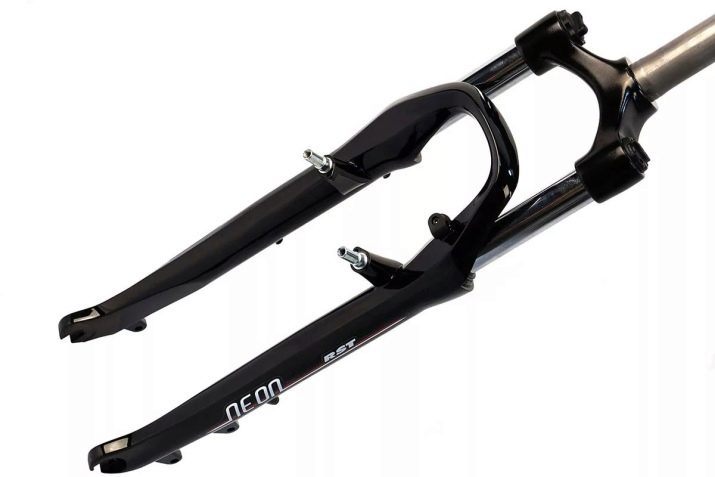
- Air (or pneumatic)... Air in such forks performs two roles at once: the role of a spring and a damper. Pressurized air is pumped into the fork mechanism using a special pump. Bicycles with such forks are not recommended for extreme riding - the shock absorber mechanism loses strength very quickly under heavy loads.
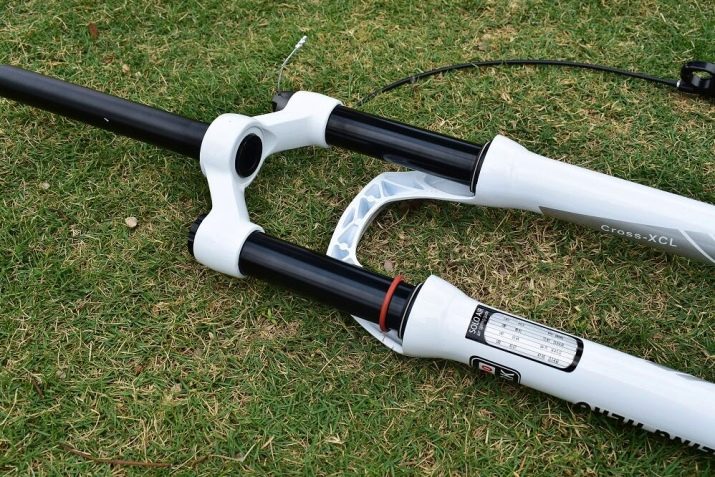
- Oil-air (or hydraulic). In this case, a special oil capsule acts as a damper, and compressed air is used as a spring. This type is used in the manufacture of expensive professional-grade bicycles, as it is able to withstand colossal loads and has a number of additional settings.
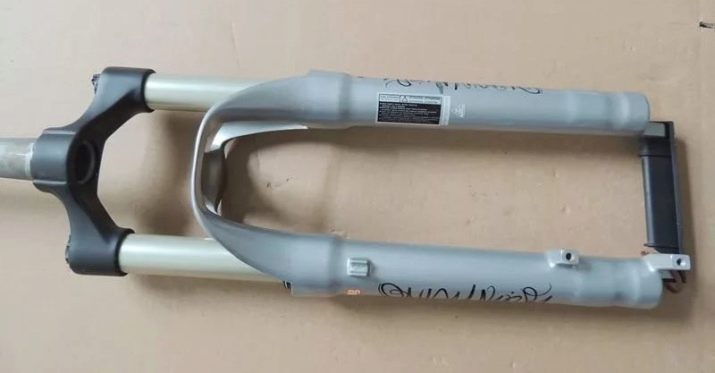
- Oil spring. This variety is considered to be of the highest quality. The function of the spring in such units is performed by a standard steel spring, but the oil is used as a damper. Shock-absorbing bikes of this type have incredibly smooth ride and are suitable for any riding style.
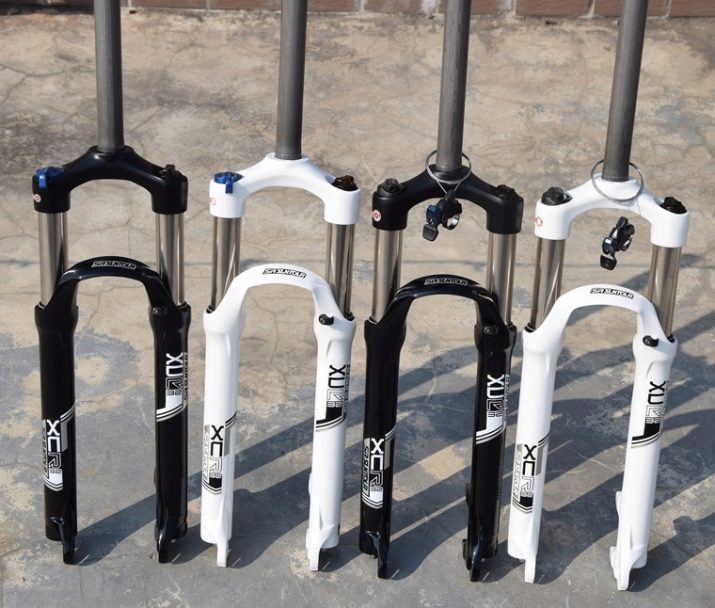
Dimensions (edit)
The sizes of bicycle forks may vary depending on the type of the unit itself and the purpose of the bicycle.
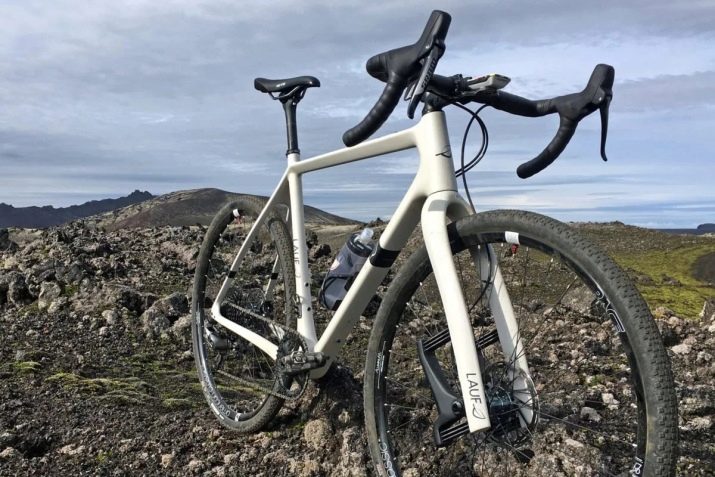
While the overall unit size can range from 20 to 26 inches (up to 29 in rare cases), travel rates differ depending on the type of bike being used.
- hybrids - 5-7 cm;
- cross-country - 8-10 cm;
- dirt - 8-10 cm;
- competitions - 12-15 cm;
- freeride - 18-25 cm;
- downhill - 17-20 cm;
- hardcore freeride - 25-30 cm.
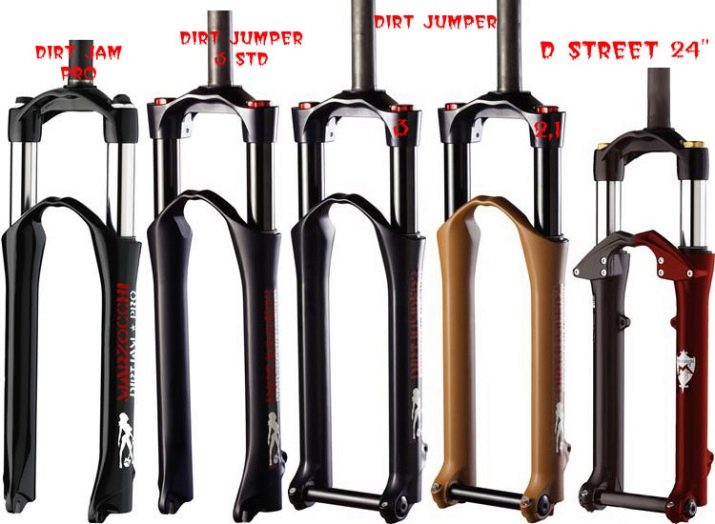
In addition, for different riding styles, it is recommended to use designs with different leg diameters: from 28 mm for regular cycling and up to 42 mm for hardcore freeride.

Which one is better to choose?
Experienced athletes know that it is not enough to be guided by a specific brand and certainly not the appearance of the model when choosing a bicycle fork.
When choosing a fork for a bicycle, it is worth soberly assessing not only the dimensions and weight of the bike, but also its own weight.
For example, for a person with a thin physique, you should choose a model of a lightweight type, but cyclists weighing more than 100 kg should consider buying carbon or titanium bicycles with units of increased strength and elasticity.
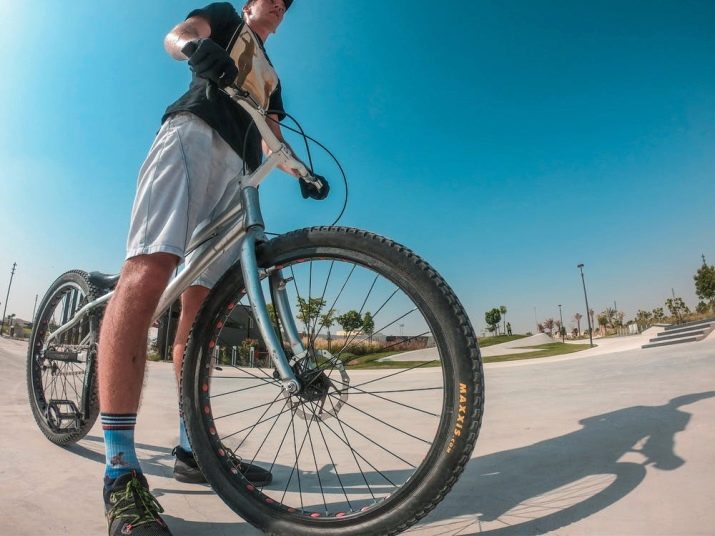
No matter how long you have been cycling, it is always worth buying only popular models of bicycle components. It will be easy for them to find a replacement or have them repaired.
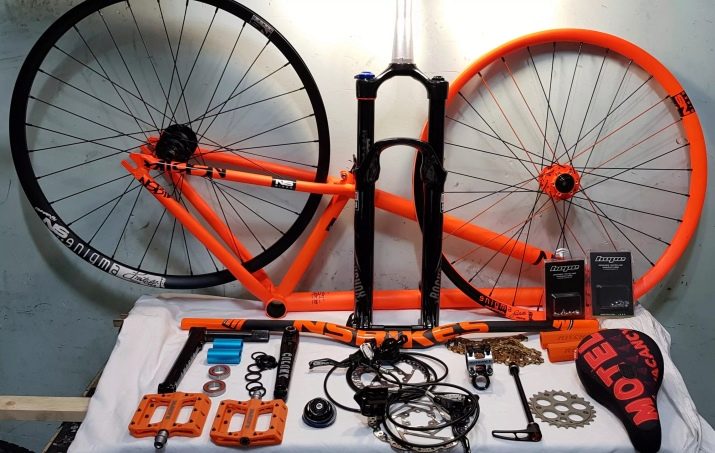
A lot in the choice depends on the riding style that you adhere to. For example, for measured trips on city roads, it will be economically unprofitable to buy a unit with a double crown and an oil-spring shock absorber - in such conditions they will not be able to develop their potential.
The more often and harder you ride, the more expensive and better the fork should be for your bike. Remember that sometimes it is better to buy a quality model in advance than to replace it after a year due to a breakdown.
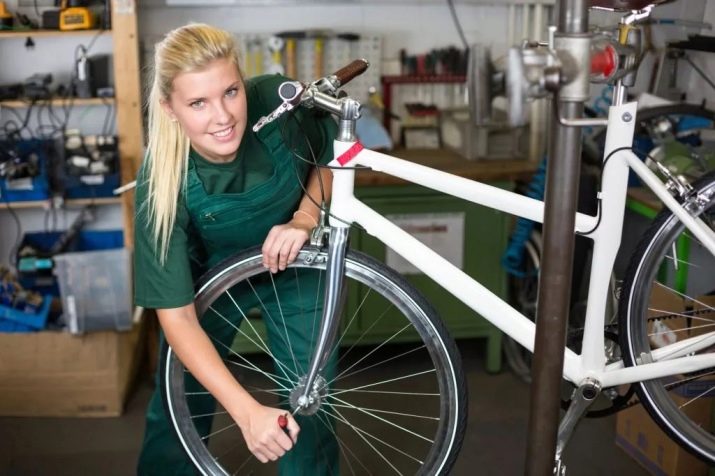
Manufacturers overview
When choosing a bicycle fork, it will be useful to familiarize yourself with manufacturers who, according to the majority of athletes, they produce the highest quality units.
- Fox - a great option for buying a quality bike fork. This brand produces expensive, high quality units with a long service life.
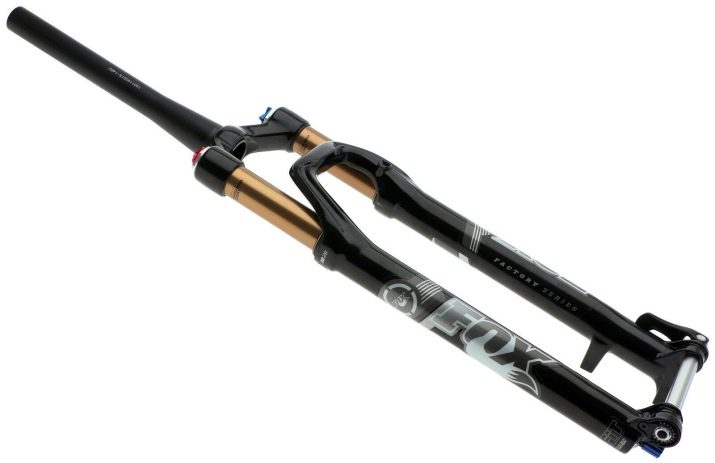
- SR Suntour - the products manufactured by this company belong to the budget and can compete in strength and reliability with many premium brands. Recently, the range of high-quality bicycle units under this brand has been supplemented with expensive titanium models, and therefore such forks are not often found among Russian consumers.
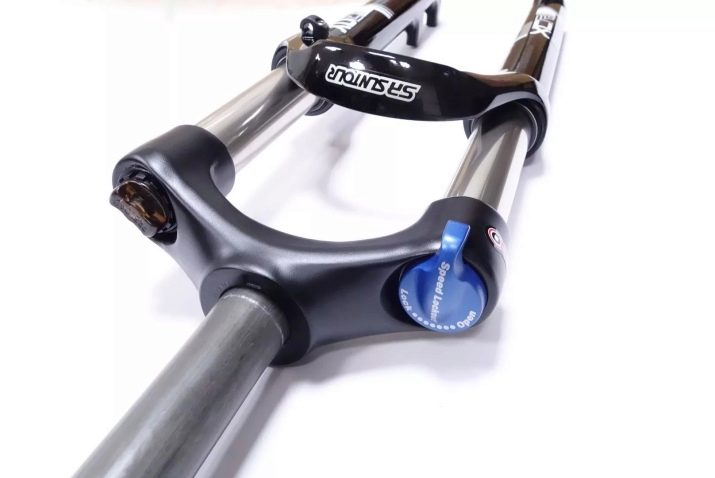
- Zoom Is considered one of the most budget-friendly bicycle component brands. The products of this company are distinguished by high strength, reliability and offers for purchase both standard spring and air-oil forks.

- Manitou Is a very common brand that has been in demand in America and Europe for over 20 years. Produces high-quality and expensive types of forks ("flip-flops" and spring-oil), which are used in the creation of professional road bicycles.
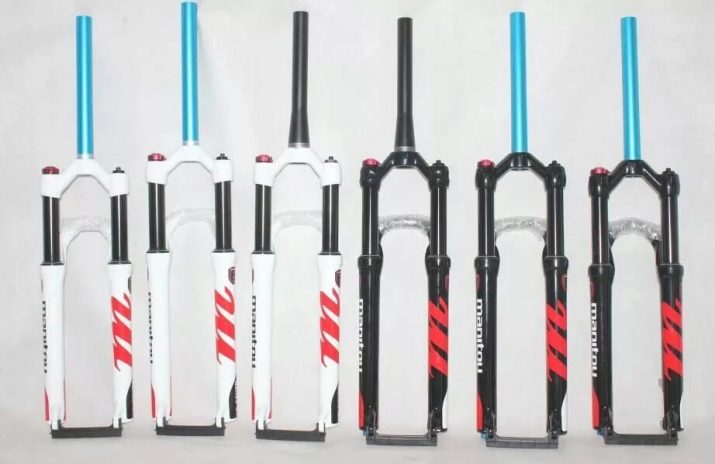
Installation rules
The only rule of thumb when installing a bicycle fork (any type except rigid) is to use the help of qualified specialists who can correctly connect all the components of the bicycle.
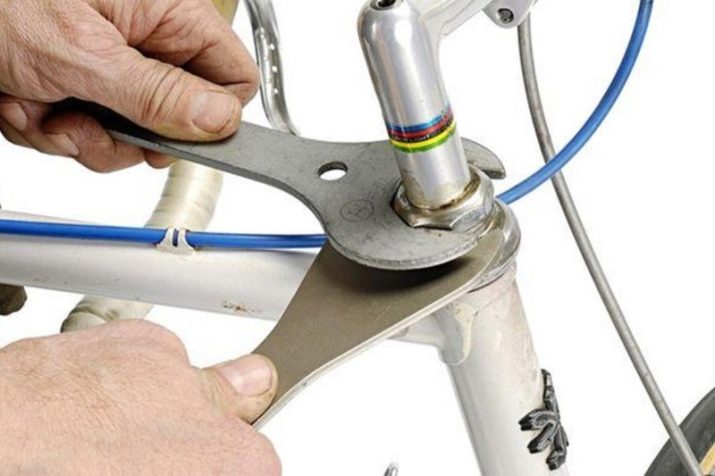
If the desire to install it yourself is too great, you can check out the following video.








